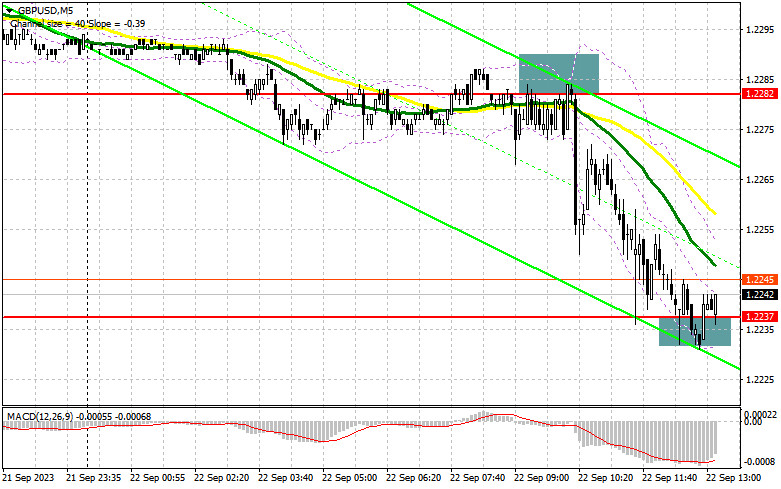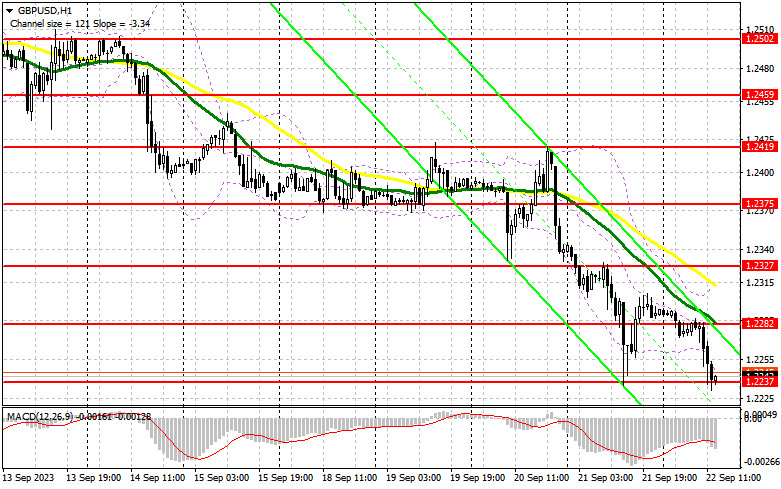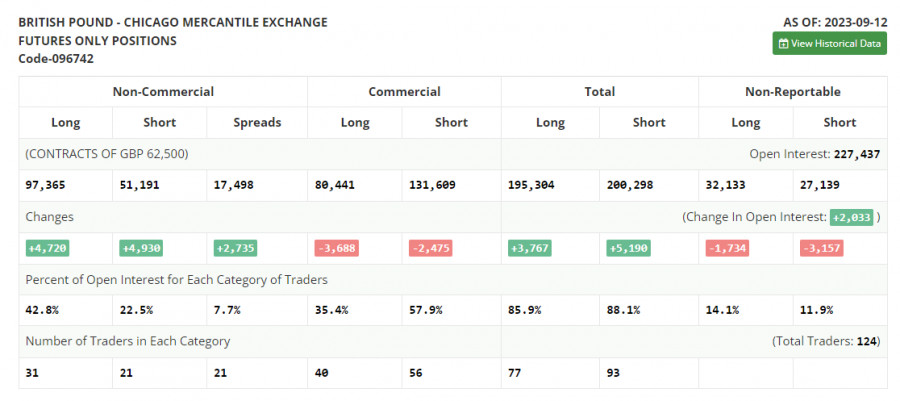
In my morning forecast, I drew attention to the level of 1.2282 and recommended making entry decisions based on it. Let's look at the 5-minute chart and analyze what happened there. The rise and the formation of a false breakout at 1.2282 led to a sell signal, resulting in a sharp drop in the pair to the support area at 1.2237, allowing traders to capture about 40 points of profit from the market. In the second half of the day, the technical picture remained unchanged.

To open long positions on GBP/USD, the following is required:
Weak data on activity in the UK led to another round of selling the pound, and considering that buyers do not have significant plans in the area around 1.2237, it is better to avoid rushing with pound purchases against the bearish market, even at the current lows. Only one more false breakout formation at 1.2237, after the release of similar PMI index data, but for the United States this time, will provide an entry point for long positions with a correction target to 1.2282. This level coincides with the moving averages, favoring the bears, which will limit the upside potential of the pair. A breakout and consolidation above 1.2282 will restore confidence to the buyers at the end of the week, giving a signal to open long positions with an exit at 1.2327, where I expect to see more significant sellers. The ultimate target remains the area of 1.2375, where I will take profit. In the scenario of a decline to 1.2237, as well as the absence of buyer activity there in the second half of the day, which seems likely, pressure on the pound will only increase. In this case, only the defense of 1.2192, along with a false breakout, will provide a signal to open long positions. I plan to buy GBP/USD on a bounce only from the 1.2154 minimum, with a 30-35 point intraday correction target.
To open short positions on GBP/USD, the following is required:
In the event of a rise in GBP/USD after weak data on US activity in September of this year, it is best not to rush with sales at the current monthly lows. The optimal scenario would be short positions around the same resistance level of 1.2282, from where we have already obtained one entry point today. A breakout and a bottom-up test of 1.2237, where trading is currently taking place amid strong statistics, will deal a new serious blow to the bullish positions, providing an opportunity for a drop to the support at 1.2192. The more distant target remains the area of 1.2154, where I will take profit. In the scenario of a rise in GBP/USD and the absence of activity at 1.2282, buyers will have an excellent chance for a correction at the end of the week. In this case, I will postpone the sales until a false breakout at 1.2327. Without a downward movement there, I will sell the pound only on a bounce from 1.2375, but only counting on a pair's intraday correction of 30-35 points.


Indicator Signals:
Moving averages
Trading is conducted below the 30 and 50-day moving averages, indicating further decline in the pair.
Note: The author considers the period and prices of the moving averages on the H1 hourly chart and differs from the general definition of classical daily moving averages on the D1 daily chart.
Bollinger Bands
In the case of a decrease, the lower boundary of the indicator, around 1.2237, will act as support.
Description of Indicators:
• Moving Average (determines the current trend by smoothing volatility and noise). Period 50. Marked on the chart in yellow.
• Moving Average (determines the current trend by smoothing volatility and noise). Period 30. Marked on the chart in green.
• MACD Indicator (Moving Average Convergence/Divergence — convergence/divergence of moving averages). Fast EMA period 12. Slow EMA period 26. SMA period 9.
• Bollinger Bands. Period 20.
• Non-commercial traders - speculators such as individual traders, hedge funds, and large institutions using the futures market for speculative purposes and meeting specific requirements.
• Long non-commercial positions represent the total long open positions of non-commercial traders.
• Short non-commercial positions represent the total short open positions of non-commercial traders.
• The net non-commercial position is the difference between non-commercial traders' short and long positions.